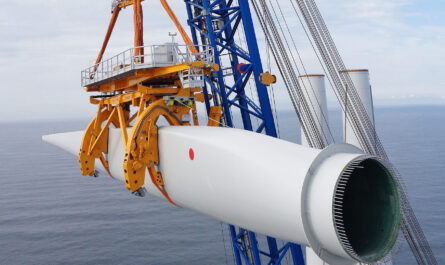Advanced Energy Storage: The Future of Sustainable Power
Energy storage technologies have come a long way and are advancing at a rapid pace to meet the growing needs of renewable energy adoption and electric vehicles. Advanced battery chemistries, flow batteries, compressed air storage, pumped hydro, and other innovations are shaping the future of a sustainable energy landscape. In this article, we will explore some of the most promising advanced energy storage systems technologies and their potential to accelerate the clean energy transition.
Lithium-Ion Battery Advances
Lithium-ion batteries have dominated the portable electronics and electric vehicle markets for decades due to their high energy density. Continuous research and development are further improving lithium-ion battery performance, lifetime, safety, and reducing costs. New cathode and anode materials with higher storage capacities are being commercialized. For example, lithium-iron-phosphate (LFP) cathodes offer improved thermal stability and longevity compared to traditional lithium cobalt oxide (LCO) cathodes. Electrolyte innovations enable faster charging and discharging rates. Solid-state battery designs eliminate the flammability risks of liquid electrolytes.
Advances in lithium-ion manufacturing processes such as dry electrode coating and improved production automation are boosting energy densities while lowering costs. The growing EV market is driving lithium-ion battery costs below $100/kWh, the benchmark for grid-level energy storage competitiveness. Several battery giants are scaling megafactories to mass produce low-cost, high-performing lithium-ion batteries. As costs continue to decline below $80-90/kWh, lithium-ion will enable cost effective stationary storage solutions for renewables integration and grid services at an unprecedented scale.
Flow Batteries and Beyond Lithium
While lithium-ion batteries dominate portable electronics and EVs, their relatively high costs make flow batteries more competitive for large-scale stationary storage applications over multiple hours. Several flow battery chemistries are in use or under development. Vanadium redox flow batteries (VRFB) offer multi-hour duration with minimal capacity fade over thousands of cycles. Recent VRFBs achieve energy densities 2-3 times greater than previous generations by utilizing low-resistance membranes and active electrode areas. Iron-chromium, zinc-bromine, and polysulfide bromide systems offer alternative electrochemistries with varying performances.
Beyond lithium and flow battery technologies, research explores a variety of emerging energy storage concepts including lithium-sulfur and lithium-air batteries. The former could nearly double lithium-ion energy density while lowering costs. The latter enables truly high energy density if challenges around electrolyte reactivity and cathode dissolution are resolved. Promising early-stage technologies worth watching include magnesium and sodium-ion batteries as post lithium alternatives. Hybrid flow batteries combine the benefits of liquids and solids in novel designs as well. With continued R&D support, some of these beyond lithium systems could become commercially viable this decade.
Compressed Air and Pumped Hydro Energy Storage
Large-scale mechanical energy storage options play an important role in grid-scale storage. Compressed air energy storage (CAES) stores energy as compressed air in underground caverns or pipes. During discharge, the compressed air is heated and expanded through a turbine to generate power. Adiabatic CAES facilities improving upon traditional designs through the integration of thermal storage enable round-trip efficiencies over 70%. Pumped hydro energy storage (PHES), the dominant grid-scale technology historically, pumps water between elevated reservoirs. With over 200 GW of capacity globally, PHES provides baseload power for the grid but requires specific geographic conditions.
Newer designs of both CAES and PHES are being demonstrated at smaller scales suitable for distribution-level energy storage using manmade vessels rather than natural geologic formations. Such deployments paired with renewable generation offer reliability benefits for islanded microgrids. Advancing these mature technologies helps supplement battery-based solutions with lower levelized costs of storage for multi-hour durations important for non-wire grid upgrades. Combined with digital controls and renewables-friendly inverters, hybridization of compressed air, pumped hydro, and batteries could shape sustainable energy infrastructure development worldwide.
Propelling Clean Energy Adoption
As policy support, technology innovation, and manufacturing scale drive down storage costs, advanced batteries, flow batteries, compressed air facilities, and other storage methods will play an increasingly critical role in accelerating the clean energy transition both on and off the electric grid. Consumer and commercial energy storage paired with solar will enable energy independence and resilience for homes and businesses worldwide. Behind-the-meter storage paired with renewables offers strategic deferral of costly grid upgrades.
At the scale of entire communities, microgrids integrating local renewable energy generation with energy storage ensure uninterrupted access to clean power. At the level of cities and towns, energy storage is key to maximizing solar and wind adoption by dispatching stored power as needed to meet demand. And for entire power grids, advanced energy storage provides applications from renewable firming and peak shaving to transmission and distribution support services enabling a stable high-renewables future. With continued optimization, promising advanced energy storage technologies will help realize a sustainable, affordable, and equitable clean energy system for all.
*Note:
1. Source: Coherent Market Insights, Public sources, Desk research
2. We have leveraged AI tools to mine information and compile it



